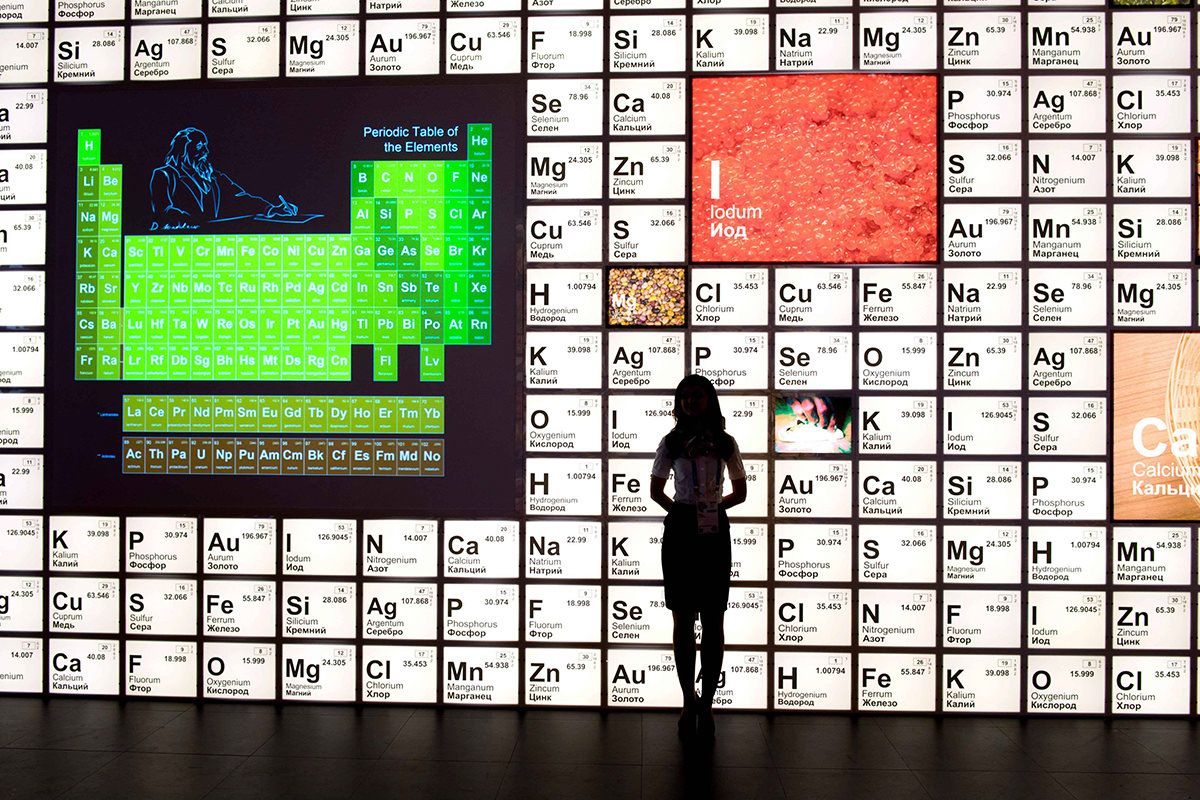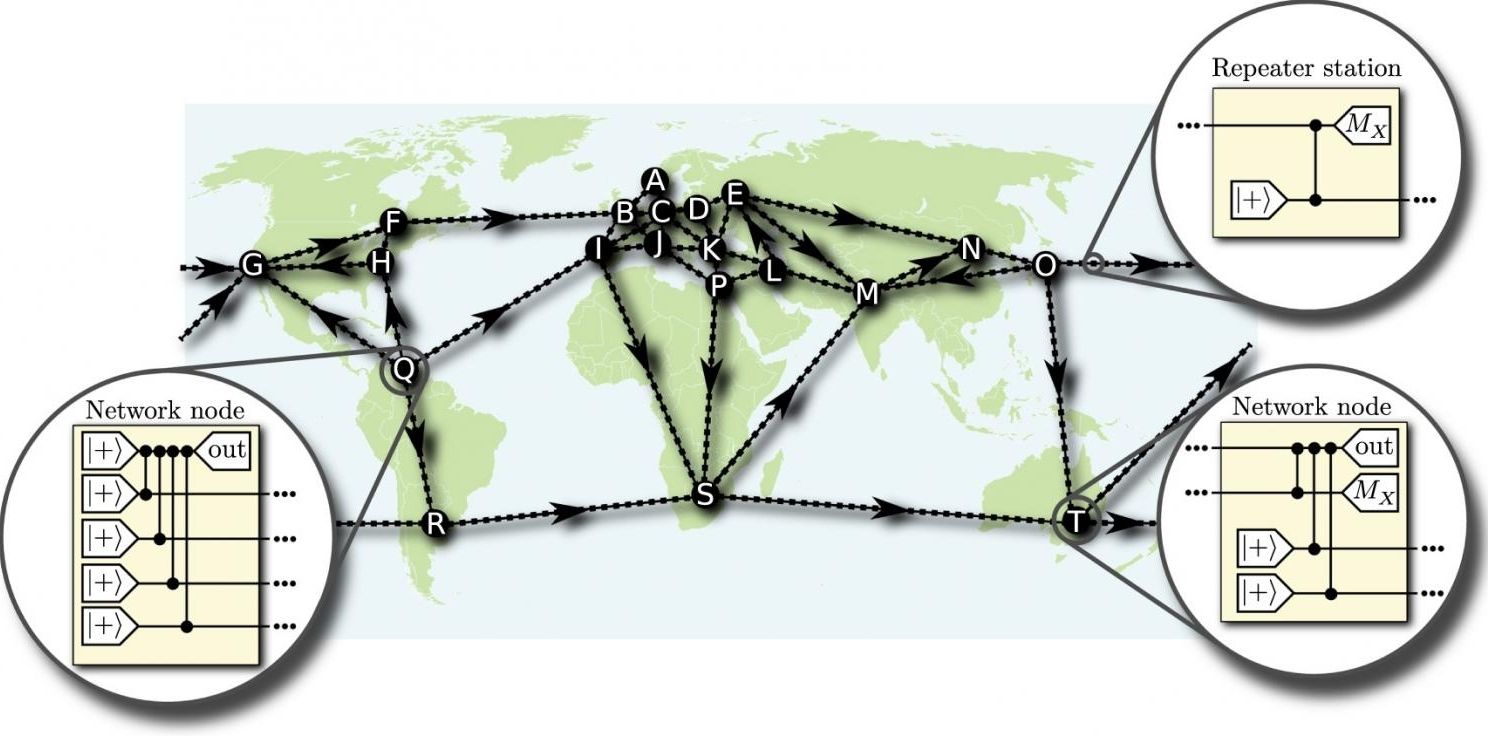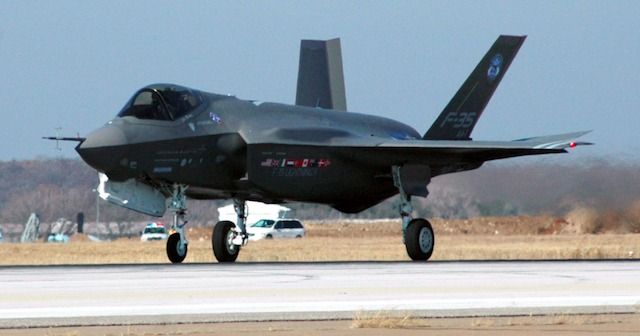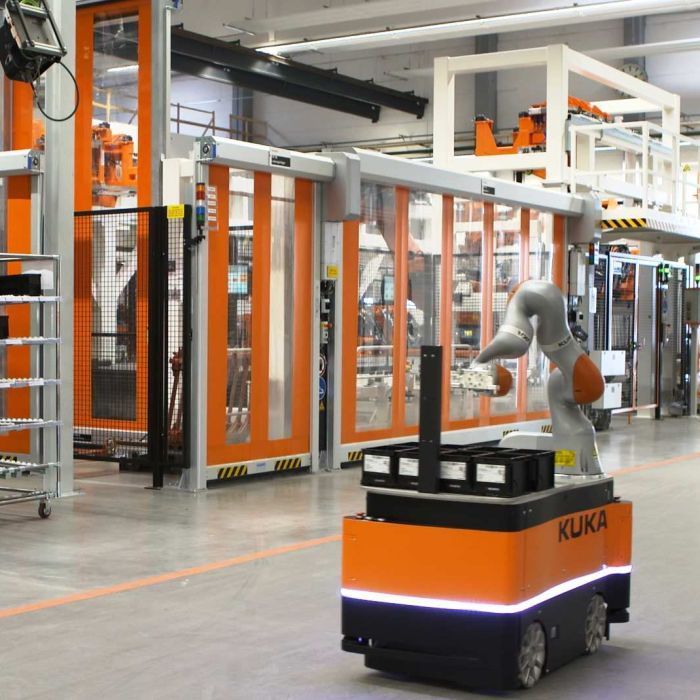Page 10889
Jun 8, 2016
Worldwide quantum web may be possible with help from graphs
Posted by Karen Hurst in categories: internet, mathematics, particle physics, quantum physics, security
(Phys.org)—One of the most ambitious endeavors in quantum physics right now is to build a large-scale quantum network that could one day span the entire globe. In a new study, physicists have shown that describing quantum networks in a new way—as mathematical graphs—can help increase the distance that quantum information can be transmitted. Compared to classical networks, quantum networks have potential advantages such as better security and being faster under certain circumstances.
“A worldwide quantum network may appear quite similar to the internet—a huge number of devices connected in a way that allows the exchange of information between any of them,” coauthor Michael Epping, a physicist at the University of Waterloo in Canada, told Phys.org. “But the crucial difference is that the laws of quantum theory will be dominant for the description of that information. For example, the state of the fundamental information carrier can be a superposition of the basis states 0 and 1. By now, several advantages in comparison to classical information are known, such as prime number factorization and secret communication. However, the biggest benefit of quantum networks might well be discovered by future research in the rapidly developing field of quantum information theory.”
Quantum networks involve sending entangled particles across long distances, which is challenging because particle loss and decoherence tend to scale exponentially with the distance.
Jun 8, 2016
Why Central Banks Will Issue Digital Currency — By Adam Ludwin | Medium
Posted by Odette Bohr Dienel in categories: bitcoin, business, cryptocurrencies, governance, government
“In an obscure corner of the internet, an anonymous person or persons published a math paper — the “Bitcoin white paper” — that solved a problem that had until then stumped computer scientists: how to create digital money without any trusted parties.”
Mass of water vapor that is at least 140 trillion times that of all water in the world’s oceans combined, and 100,000 times more massive than the sun.
A team of astronomers have discovered the largest and farthest reservoir of water ever detected in the universe.
The researchers found a mass of water vapor that is at least 140 trillion times that of all water in the world’s oceans combined, and 100,000 times more massive than the sun.
Jun 8, 2016
Venus Floating Station Concept — NASA
Posted by Klaus Baldauf in categories: engineering, habitats, space travel

For a planetarium program intended to show possible future NASA exploration directions, Home Run Pictures was tasked with creating plausible human habitats on the various planets and moons in the Solar System. Engineering concepts required understanding of the environments and the structures or spacecraft necessary for longer term human survival. Avoiding being too science fiction was difficult at times. The surface of Venus is a rough environment with temperatures and pressures at the extreme. But the dense atmosphere seems to allow the possibility of “floating” a space station hanging below some sort of blimp-like structure. An attempt at using what would look like modular structures, similar to what has been used with the International Space Station was implemented. A circular structure was used to keep the station in balance in the turbulent Venusian upper atmosphere with a long strut hanging down from the center to help stabilize the craft and provide mounting points for various experimental packages and docking ports for shuttles or exploratory probes. Small shuttles would drop into the upper atmosphere delivering cargo and personnel. When the station’s scientists desire to dive deeper into the Venus atmosphere for exploration, shuttles that lean more towards the submersibles used for Earth ocean exploration are used. The Venusian atmosphere is very dense and the pressure would crush anything but craft that are constructed like submarines with reinforced portholes instead of windows. Instead of using rocket power for maneuvering, the shuttle/submersible vehicles use large turbo-fan like engines. Everything needs to be constructed of cororsive-resistent materials to survive the acidic Venusian atmosphere. Scientists theorize that massive lighting events would be the norm and electronic and digital hardware would need to be insulated from the extreme electrical environment.
Jun 7, 2016
Security experts wary of the Pentagon’s new microchip supplier
Posted by Karen Hurst in categories: computing, military, satellites, security
To provide computing power for the U.S. arsenal of advanced weaponry, satellites and information systems, the Pentagon has entered into a seven-year deal with Globalfoundries Inc, an Abu Dhabi-owned microchip manufacturer.
The move serves to diversify the Defense Department’s microchip supply chain — an issue of particular concern for some defense officials — which has been dominated by a short list of sellers led by IBM for over a decade.
A microchip is a small, wafer-thin semiconductor used to relay information through an electrical grid, thereby making an integrated circuit. Almost every modern digital device is chock-full of microchips.
Continue reading “Security experts wary of the Pentagon’s new microchip supplier” »
Jun 7, 2016
IARPA exploring deceptive cyber defenses
Posted by Karen Hurst in categories: cybercrime/malcode, neuroscience
The intelligence community’s research arm is looking for information on techniques that use deception and misinformation to protect data and systems from cyberattacks.
Jun 7, 2016
China embarks on tech shopping spree for German robots and pianos
Posted by Karen Hurst in categories: business, economics, robotics/AI
China has been on a shopping tour of Germany, splurging on a string of key industrial companies in the past few weeks as Beijing moves to acquire the country’s fabled technological know-how and turn its own products into global brands.
But resistance to the offensive is growing following a 5 billion euro ($7.7 billion) bid last month by Chinese home appliance group Midea for leading German industrial robot maker Kuka.
The size of the play set alarm bells ringing across the business and political establishment of Europe’s biggest economy.
Continue reading “China embarks on tech shopping spree for German robots and pianos” »
Jun 7, 2016
Want to know what the future of medical invention looks like? Read on
Posted by Karen Hurst in categories: 3D printing, biotech/medical, business, computing, cyborgs, food, habitats, mobile phones, singularity, transportation, wearables
Medical/ Biocomputing will only continue to grow and advance as a result of the demand for more improved experiences by consumers and business in communications and entertainment, food, home life, travel, business, etc.
Today, we have seen early opportunities and benefits with 3D printing, BMI, early stage Gene/ Cell circuitry and computing. In the future, we will see these technologies more and more replaced by even more advance Biocomputing and gene circuitry technology that will ultimately transform the human experiences and quality of life that many like to call Singularity.
Printing technology has come a long way from screechy dot-matrix printers to 3D printers which can print real life objects from metals, plastics, chemicals and concrete. While, at first, 3D printers were being used to create just basic shapes with different materials, more recently, they have been used to create advanced electronics, bio-medical devices and even houses.
Aircraft manufacturer Airbus recently showcased the world’s first 3D-printed mini aircraft, Thor, at the International Aerospace Exhibition and Air Show in Berlin. Although Airbus and its competitor have been using 3D-printed parts for their bigger assemblies, recent attempt shows that aviation may be ready for a new future with much lighter and cheaper planes given 3D printing not only cuts down the costs with less wastage, it also makes the plane lighter, thereby making them faster and more fuel efficient. But planes and toys is not what 3D printing might be restricted to; though in the elementary stage at the moment, the technology is being used for creating complex electronics like phones and wearables and may be able to reduce costs for manufacturers like Samsung and Apple.
Continue reading “Want to know what the future of medical invention looks like? Read on” »
Jun 7, 2016
White House Challenges Artificial Intelligence Experts to Reduce Incarceration Rates
Posted by Karen Hurst in category: robotics/AI
A new twist on AI.
On Tuesday, June 7, the White House Office of Science and Technology Policy’s Lynn Overmann, who also leads the White House Police Data Initiative, stressed the severity of the nation’s incarceration crisis while asking a crowd of data scientists and artificial intelligence specialists for aid.
















